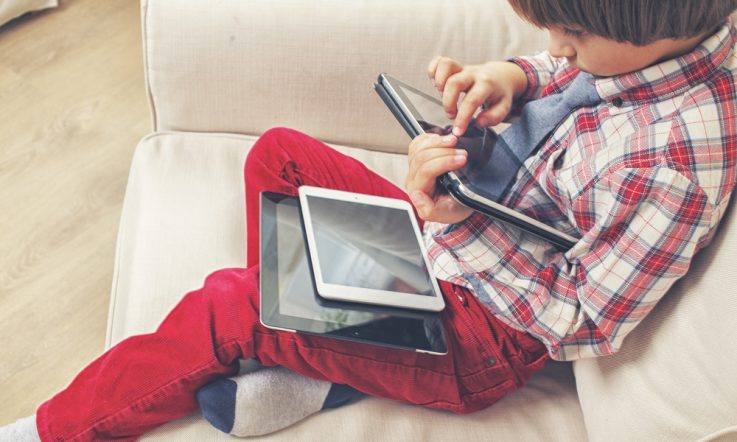In a recent Teacher article, two schools discussed their differing policies on mobile phone use during school hours. Here, we look at a range of studies that have explored the positives and negatives of allowing mobile phones to be used in class.
As Bring Your Own Device (BYOD) programs become more widespread, questions are being raised about the benefits of allowing students to actively use mobile phones as learning devices in school. Over the past decade, several studies have taken a closer look at student and educator perspectives on the issue.
One comparative study was undertaken across two schools in England in 2012, and details how students from each school use their devices during class time. One school allows the use of mobile devices and one doesn't.
The study titled “I don't think I would be where I am right now.” Pupil perspectives on using mobile devices for learning conducted student surveys. The results show that 43 per cent of students attending the school where devices are banned are still using them to help with learning despite the ban. Meanwhile, 74 per cent of students at the school which allow them, use the devices to aid learning.
Most respondents in this study say they use their device for Google and calendars during the school day. As for learning at home, most students also rely on their device.
‘A few days ago, my friend didn't understand one of the questions on the Science homework, so he Facetimed me, and I showed him my answer and I explained how I got that answer to him ...' one student says.
The research shows that students rely mostly on their devices to keep them organised. The calendar, alarms and camera (usually to take photos of a teacher's notes) are features constantly used by students, the report notes. ‘One pupil said his device was essential for “remembering things” and without he would “forget to take homework in a lot”.'
Overall, this study proposes that mobile devices are a suitable learning tool for the classroom.
‘There is clear evidence that many pupils feel that they are deriving educational benefit from the use of their devices,' the report says. ‘They are using many of the features of their devices and often finding creative ways to employ these features in their schoolwork, both at home and at school.'
Students with concerns
A study conducted in the US reveals concerns held by some students about the risks involved with allowing mobile phones to be used freely at school. The research, Hold the phone! High School Students' Perceptions of Mobile Phone Integration in the Classroom, which was published in 2016, found that although seven out of 10 of students interviewed think mobile phones support learning, serious concerns still exist among 30 per cent of respondents, who feel the negative effects of smartphones justifies a school-wide ban.
Across the 628 students surveyed, worries range from general distraction (for example, phones ringing during class) to fears about other students using smartphones to cheat, sext and cyberbully.
Despite this, the study also found that 90.7 per cent of the students surveyed were using their mobile phones for school-related work.
The authors of this study say that school policy makers should consider these findings and ‘develop clear policies on appropriate classroom mobile phone use as well as consequences for their misuse … expecting schools to completely eliminate the problems associated with mobile phone integration, however, is unrealistic; therefore, school stakeholders must carefully consider the benefits and barriers identified by students in determining policy.'
Mobile phone use – a teacher's perspective
As for what teachers think about including the use of mobile phones in their lessons, one US study looked at nine teachers' attempts to incorporate various technology devices in their lessons.
The study, Teaching and learning with mobile computing devices from 2015 details the experiences of one Mathematics teacher, Steven, who uses an iPhone in class.
‘Steve used his own iPhone to document students' work and attendance,' the study says. ‘He uploaded scanned tests, quizzes, assignments, and photographs into a web-based software application called Evernote. Each of his students [primarily 9th and 10th graders] had a file in this program … this was helpful to Steven when conducting formal and informal parent-teacher conferences and also when discussing with other teachers and administration.
‘Steven enjoyed the flexibility of mobile devices by holding class in locations other than his classroom, such as the auditorium and outside … [and] he could use his iPhone to “pull up every document [he's] ever scanned in and get a much bigger, much more accurate picture” of a student's progress.'
Although participants in this study say using a mobile device in the classroom involved the need for exploration and a lot of personal research, the authors suggest that with the growing trend of BYOD, schools should consider integrating mobile devices into lesson plans.
References:
Grant, M.M, Tamim, S., Brown, D.B., Sweeney, J.P., Ferguson, F.K., & Jones, L.B (2015). Teaching and learning with mobile computing devices: Case study in K-12 classrooms. TechTrends: Linking Research and Practice to Improve Learning, 59(4), 32-45. DOI: http://dx.doi.org/10.1007/s11528-015-0869-3
Thomas, K, & Muñoz, MA. (2016) 'Hold the Phone! High School Students' Perceptions of Mobile Phone Integration in the Classroom', American Secondary Education, vol. 44, no. 3, pp. 19-37. https://www.ashland.edu/coe/about-college/american-secondary-education-journal
Walker, R. (2013) “I don't think I would be where I am right now". Pupil perspectives on using mobile devices for learning', Research in Learning Technology, vol. 21, pp. 1-12. DOI: 10.3402/rlt.v21i2.22116



